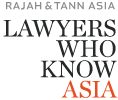On 3 January 2024, the Ministry of Industry and Commerce ("MOIC") issued Decision No.0008/MOIC on the Management of International Code Numbers (Barcode) ("Decision"). The Decision defines the principles, regulations and measures regarding the management, monitoring, and inspection of the use of international code numbers (Barcode) ("ICNs") in Lao PDR. This aims to promote the quality of production and services, accurate representations of the actual situation, and contribution to the development of the national economy and society.
According to the Decision, there are seven types of international codes that have been approved by the international code organisation GS1:
- European Article Numbering/Universal Product Code (EAN/UPC) - the international code of the European Union or the international code with 13 digits used for the international code of retail products;
- Interleaved 2 of 5-14 (ITF-14) - an international code with 14 digits used for paper boxes and cargo containers;
- GS1-128 - an international code used for transportation and warehouse systems. It can store product information both in numbers and letters;
- GS1 Data Matrix - a two-dimensional international code used for medical devices or metal containers;
- GS1 Data Bar - an international code used for short-lived, perishable products such as plants, vegetables, fruits, meat, etc.;
- Quick-Response Code (QR Code) - an international two-dimensional code used for public relations, advertising media, entering various websites, etc.; and
- Radio Frequency Identification (RFID) - an electronic panel that contains information that can track the movement of goods with radio frequency waves.
Application for Permission to Use International Code Numbers
An individual, legal entity or organisation that conducts business relating to the production, distribution, circulation and service of products in Lao PDR and intends to use ICNs in the course of its business must apply for permission to use such ICNs by submitting the following documents to the Department of Standards and Measurements ("DSM") or the Department of Industry and Trade of the relevant province or capital:
- An application in a form prescribed by DSM;
- A copy of its enterprise registration certificate;
- A copy of its annual tax payment certificate;
- A copy of its business operating licence issued by the relevant sector;
- A copy of its previous certificate of use of ICNs (in case of modification, change of content, or increase in number of ICNs);
- A copy of its ID card, census or passport; and
- Product images.
Verification of ICNs
An individual, legal entity or organisation that wants to verify the validity of an ICNs should submit an application to DSM in writing and attach the information relating to the ICN and the products that need to be checked.

